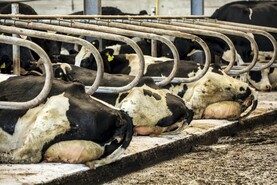“Fertiliser manufacturers need to ensure that the date of manufacture and expiry date are visible on protected urea bags, in order to restore farmer confidence back in the product,” Dairygold chair, Seán O’Brien, has said.
Speaking from the floor at a panel on protected urea and clover at Dairy Day, he called on fertiliser manufacturers to be more transparent when it comes to protected urea.
He highlighted the important role protected urea has to play in the retention of the nitrates derogation, but acknowledged that farmers were dissatisfied with the product this year.
Acknowledging the reduction in emissions that protected urea provides, Liam Dunphy, managing director of Gouldings, said it’s not without its challenges.
“It’s how you make it work on the ground. There is no point in us having a solution if farmers can’t adapt it on their farm. We have to make it happen.”
He added that, predominantly, the calls fertiliser companies received from farmers this year were in regard to issues around spreading rather than grass growth. The main challenge around spreading, he felt, had been experienced by those switching from calcium ammonium nitrate (CAN) to protected urea due to the different densities of the products.
“One is like a golf ball and the other is like a ping pong ball. Urea is a lighter product and it doesn’t travel the same distance.”
Differences in product density was an area Teagasc soil scientist, David Wall, said was an issue too. He saw fewer spreading issues with straight protected urea products compared to blends. Because of this, he wasn’t convinced the coating in protected urea was the issue, but he said the blends present more of a challenge as they have different density elements in them.
“This makes it more difficult to calibrate the fertiliser spreader, as something like phosphate will travel further.”






 This is a subscriber-only article
This is a subscriber-only article










SHARING OPTIONS: